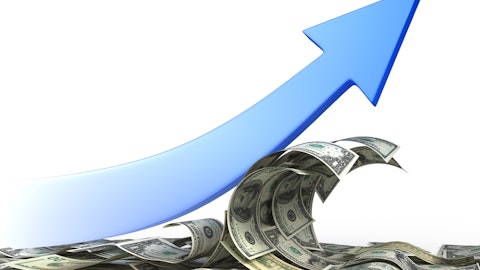A lot of people like to “cheer” for higher prices in the short-term.
Yet for the long-term net buyer, it’s lower prices that can provide the ultimate benefit. This allows you to purchase more shares, which creates more income and a greater underlying earnings claim.
Personally when I see lower prices, that’s when I tend to get more interested.
That’s why I recently put out an article highlighting 8 dividend paying securities that had declined in share price by at least 15% over the last year.
This article takes a deeper look at these same 8 securities.

All eight companies have kept their dividend payout the same or increased it in the last year, thus resulting in significantly higher dividend yields.
Here’s a look at each of the eight securities highlighted, along with their respective share price declines from April of 2015:
– Kohl’s Corporation (NYSE:KSS) – 42% lower
– Union Pacific Corporation (NYSE:UNP) – 25% lower
– Franklin Resources, Inc. (NYSE:BEN) – 23% lower
– Archer Daniels Midland Company (NYSE:ADM) – 23% lower
– CSX Corporation (NASDAQ:CSX) – 22% lower
– American Express Company (NYSE:AXP) – 20% lower
– Norfolk Southern Corp. (NYSE:NSC) – 19% lower
– Eaton Vance Corp (NYSE:EV) – 16% lower
It doesn’t always work out, but in my view it makes for a lower “investment bar.” That is, the companies don’t have to perform as well as they had in the past, and investment returns could still be reasonable. This is fueled by the higher starting dividend yield to go along with a now lower valuation as well.
For this article I’d like to expand upon those securities a bit. Let’s begin.
Kohl’s Corporation (NYSE:KSS)
Incidentally, I recently covered Kohl’s here. If you have a bit of time and happen to be interested in the business, I’d recommend reading that post to get a fuller picture.
However, for this article I can break down the basic points. Think of what follows as being a “cliff notes” version of the original.
Basically I’d consider the quality of the company to be “good” or else “very good” but not quite exceptional. It’s not really in the same league as some of your dividend growth stalwarts out there.
However, the current valuation makes it a bit more interesting. Earnings have come down recently (6% to 20% depending on if you look at accounting or adjusted earnings) but so has the price. In fact, the price has come way down – more than 40% in the last year.
This has enabled some reasonable looking components to start looking much more attractive. For instance, a year ago the dividend yield sat at 2.4%. Based on a share price of just above $43, the current mark is closer to 4.6%. So even if you don’t have the same growth rate expectation, it’s clear that the starting yield offers a “leg up.” Even without growth, a 4.6% beginning yield is attractive in today’s low rate environment.
Next you have the valuation. Instead of a company trading at 18 times earnings, it’s now closer to 11 or 12 depending on which earnings figure you look at. This has a couple of important ramifications.
First, whatever the future business growth happens to be, you stand a much better shot of capturing it with a security trading at 12 times earnings as compared to 18 times. The average earnings multiple for Kohl’s Corporation (NYSE:KSS) over the past decade has been around 13. If the business does well but the P/E ratio goes from 18 to 13, investors don’t get to capture that business performance and indeed could see capital depreciation. Alternatively, if the business performs marginally but goes from a P/E ratio of 12 to 13, investors stand to do just fine.
Perhaps just as important is the benefit of share repurchases at a lower rather than higher valuation. When a company utilizes share repurchases, it collects a portion of everyone’s underlying earnings claim and then buys out some of the partners in the business. For the remaining shareholders, you’d much prefer for Kohl’s to buy out past partners as a discount as compared to a premium. This allows the company to retire more shares and increases the per share growth as a result.
These things matter. In the link mentioned above I go into detail demonstrating how 1.5% company-wide growth could turn into 8% to 10% annualized shareholder gains for today’s investor. Effectively the much lower share price makes future returns easier to formulate. This doesn’t guarantee success, but it is the sort of thing that I like to look for in a potential partnership decision.
Follow Kohls Corp (NYSE:KSS)
Follow Kohls Corp (NYSE:KSS)





